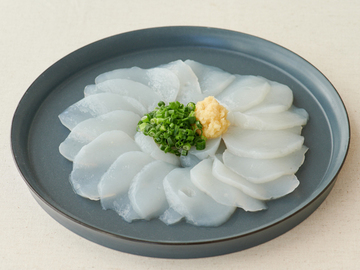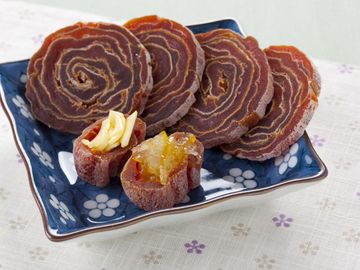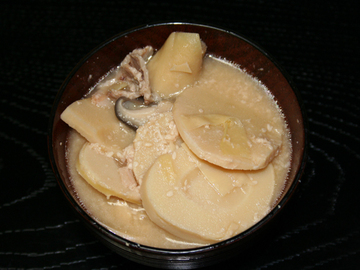Other processed agricultural products

This page offers an overview of selected traditional foods that are classified as agricultural products that do not fall under the categories of Grain products, Processed bean products, Pickles, and Soy sauce, miso, and other seasonings.
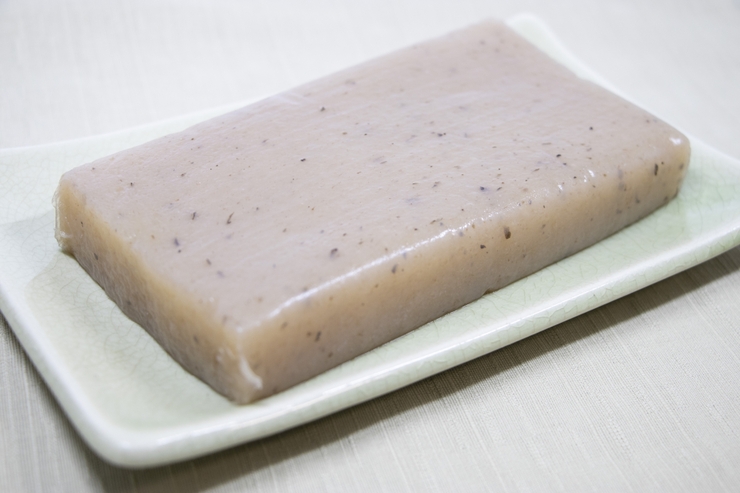
Characteristics and types
[Konnyaku]
Konnyaku is a traditional food made from konjac potatoes. It is said to have been brought over from China as a medicine, and later incorporated into food. Although there are various methods to prepare this, konnyaku is created by pre-processing konjac potatoes, grinding and drying them to create konnyaku powder, to which water and coagulant are added and the mixture is put into molds to harden and heated for sterilization.
Gunma Prefecture produces more than 90% of all konnyaku potatoes (Ministry of Agriculture, Forestry and Fisheries of Japan "Agriculture, Forestry and Fisheries Statistics" FY2021), and various ways of using this ingredient are still being handed down, such as ita-konnyaku (board-shaped konnyaku), shirataki (konnyaku noodles), and ito-konnyaku (konnyaku strings). Local foods featuring konnyaku can be found throughout Japan. The tama-konnyaku (ball-shaped konnyaku) in Yamagata Prefecture, shimi-konnyaku (frozen konnyaku) in Ibaraki Prefecture, aka konnyaku-ni (red simmered konnyaku) in Shiga Prefecture, and konnyaku no hachihai (konnyaku simmered with vegetables and broth) in Kagawa Prefecture are some examples.
To boost both domestic and international demand of konnyaku, konnyaku-based noodles have been under development in recent years. This product is said to be used in noodle dishes and salads, especially in the Asia region.
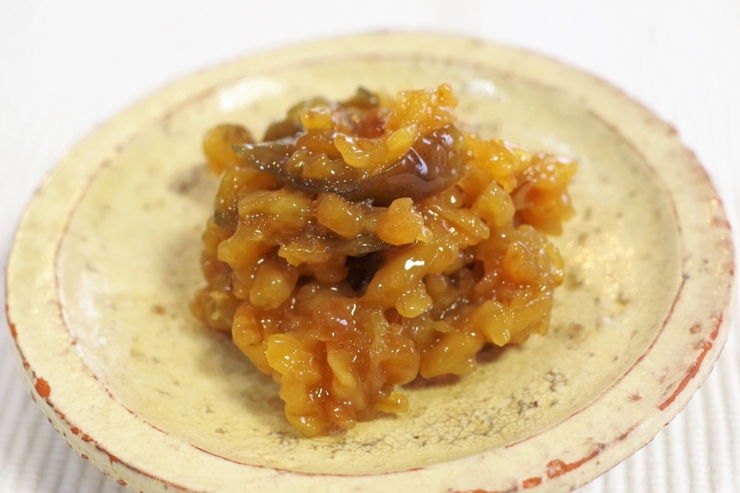
[Okazu miso]
Rich flavored okazu miso (miso eaten as a side dish) using various local foodstuffs have been passed down to each generation all over Japan. Okazu miso is a traditional food that combines and ferments miso with agricultural products. Its appeal lies in its diverse use as a side dish for rice, appetizer for drinks, or even as a seasoning for home cooking. "Kinzanji-miso" produced in prefectures such as Wakayama, Chiba, and Shizuoka is one example.
[Dried vegetables, fruits, and mushrooms]
Many traditional agricultural products of Japan are dried to lengthen their shelf life. This is to store valuable foodstuff as non-perishables for use when food becomes scarce. Methods of manufacturing these foods make the most of each region’s natural environment and local foodstuffs, with ingenious methods developed over the years. It could be said that dried food was a vital lifehack during the time before refrigerating and freezing technologies were developed.
Furthermore, drying vegetables, fruits, and mushrooms concentrates the umami of the foods to create a richer flavor. It also offers a variation in food textures.
[Processed starch products]
Starch is produced by photosynthesis of plants. There are various traditional foods created from starch stored in the seeds, roots, and stalks of plants such as rice, wheat, corn, and potatoes. Other foods derived from starch include potato starch and uiro (sweet rice jelly).
[Edible flowers]
The culture of eating flowers is said to have been brought over to Japan after the Nara era. The food culture of using flowers as tea for drinking and cooked in vinegared or simmered dishes is still being passed down through generations. For example, in Akita Prefecture, there is a local cuisine named "Yuzawagiku" in which carefully selected, native chrysanthemums are used for food, and Yamagata Prefecture is famous for its edible, simmered chrysanthemum "Mottenohoka". Chikura in Chiba Prefecture grows various edible flowers as a flower village.
Currently, advancement in flower breeding through careful selection has produced edible flowers that can be found on the market with less bitterness, astringency, and better texture.

